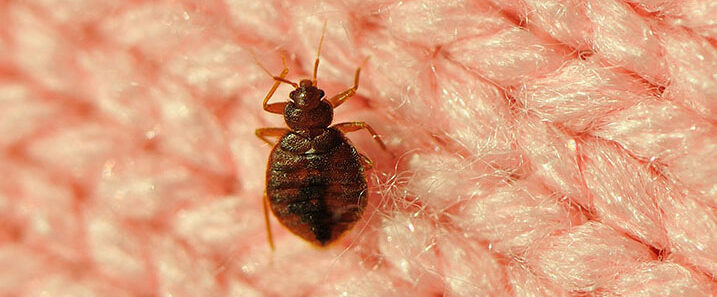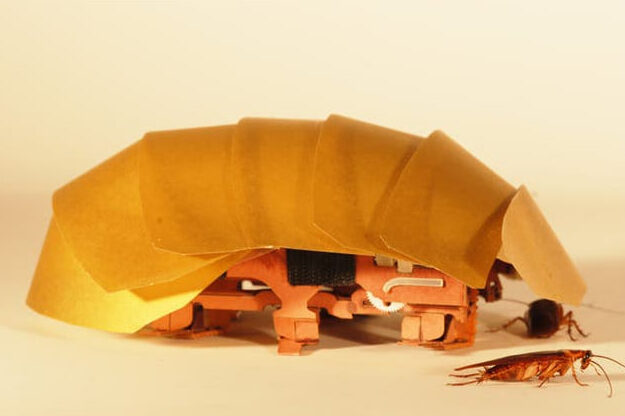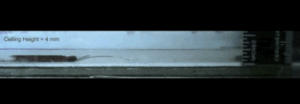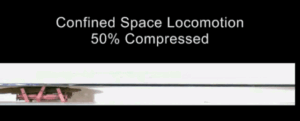Secrets about bed bugs that you should know
Probably, many of you have encountered bed bugs in your residence, such as your bedroom, hotel, workplace, dormitory, etc. The research of the entomological specialists has shown that the bed bug (if not fought) can live for a long time even without feeding, and after a long absence, it will come back and feed on your blood.
Today, fortunately, pest control experts and entomologists have conducted many studies on bed bugs and have provided new methods to eradicate and destroy bed bugs. It should be noted that the best way to deal with bed bugs is to prevent them
from entering your residence.

Seven facts you should know about bed bugs
- Bed bugs can live anywhere in any climate. They exist in worldwide
- Bed bugs are not only residents of villages, they are also widespread in cities.
- If non-specialized poisons or inappropriate, unprincipled and self-medicating spraying methods are used, bed bugs become extremely resistant.
- Bed bugs are very intelligent insects and hunt at night.
- While feeding on human blood, bed bugs use anesthetics at the bite site. So you don’t feel anything while biting at night.Bed bugs can survive for up to a year without feeding on blood.
- In a house,only 20% of people suffer from bed bug bite allergy, the rest of the people have no symptoms of the bite. That doesn’t mean they haven’t been bitten by bedbugs.
Do bed bugs only feed on human blood?
No, bed bugs are a pest for birds, pets like dogs and cats, but it’s worth noting that bed bugs can also feed on the warm blood of your dogs, cats, and other pets. Therefore, after humans, pets are the best hosts for bed bugs. The skin of animals and birds without feathers and fur are an easier food source for bed bugs, but bed bugs prefer the warm blood of humans over other animals for feeding.
Is it possible that our house is infested with bed bugs but we don’t realize it?
One of the things that are frequently reported by customers is that they see bed bugs but they don’t have any skin allergies or bites, or only one family member’s skin has reacted to bed bug bites. It should be noted that more than 40% of people generally do not show any reaction to bed bug bites, and especially the elderly will have a much lower reaction than other people and are more likely to face anaphylaxis shock. In addition, among people who have a skin reaction to bed bug bites, this reaction may not be continuous, but it can turn into skin allergies over time.
People who do not have an allergy or reaction to bed bug bites should know that they are also exposed to contamination because bed bugs need to feed on your blood to grow and multiply. People who do not have symptoms of the bite are more prone to severe anemia or anaphylactic shock (allergy with symptoms such as fever, headache, digestive discomfort, cough, swelling of the mouth, etc.).
On the other hand, it is very difficult to detect and observe the signs of the presence of bed bugs in the residence, unless you wake up continuously in the middle of the night and inspect your bed with a flashlight and a magnifying glass, which is possible. In that case, you can see the traces or the bed bug itself. In high contamination, adult bed bugs start moving away from the bed and go to other places, and in this case, there is a possibility that you will see adult bed bugs during the day. In very severe infections, a person will suffer from anemia or severe anemia.
Another sign of home infestation with bed bugs is the creation of an unpleasant smell similar to the smell of mold that can be smelled in the environment. Like other insects, bed bugs also secrete a warning substance called pheromone, which during the gathering of a group of bed bugs, sometimes this smell can be smelled, which is an unpleasant smell that is very unbearable in high pollution and some In the old days, this smell was known as a smell similar to the smell of coriander, but this was only a similarity and may not even be true.|
What can we do to prevent bed bugs from entering our apartment?
The first step in bed bug identification is that we must first identify the desired insect. It should be noted that the experts of empire Spraying Company will guide you in identifying bed bugs. People’s excessive worries make you match the appearance of the bed bug even if the insect does not resemble the bed bug. Adult bedbugs are very similar to apple seeds in terms of shape and size. Most of the bed bugs that have not been fed are slightly flat and brown in color, and after feeding, they become round and brick-red in color. In terms of appearance, adult female bed bugs are slightly chubby with a wider width and male bed bugs are more elongated.
The nymph or baby bed bug before adulthood is similar in appearance to the adult bed bug, only with a smaller size closer to the head of the needle.
The next point about being informed about the presence of bed bugs is to follow the stains and droppings of bed bugs. The probability of seeing the signs of bed bugs is much higher than the probability of seeing the bed bugs themselves. Please check the hotel room carefully while traveling, especially the bedding and mattress, and always make sure there are no bed bugs before settling in the room, and then place your belongings in the place.
When buying fiber products, especially sleeping mats, furniture, backrests, etc., it is better to get information from the seller about bed bugs and how to fight bed bugs to ensure that the product is standard and hygienic. Avoid buying used items. If you are moving to a new house, research the presence of bed bugs before entering and inspect the house completely, or get advice from a pest control expert in this field, and if there is an infestation, fight it before moving and moving your belongings inside the house. And spray for bed bugs.
In any case, we suggest that a few days before moving into a new house (even a newly built house) the experts of empire company spray bed bugs in your house, because in many cases the previous owner or tenant of the house knows about the presence of bed bugs. Menzel denies.
The importance of cleanliness and personal hygiene and living environment is very important to control bed bugs. In the following, some actions and solutions that can help reduce the risk of bed bugs entering and spreading are mentioned:
1.Cleaning and washing: Keeping clothes, blankets, sheets and curtains clean using warm water and soap can prevent the presence of bed bugs. Also, furniture and carpets can be kept clean with a vacuum cleaner.
2.Avoid sharing personal items: Avoid sharing clothes, blankets, and personal items with others, especially during trips.
3.Furniture inspection: If you buy second-hand furniture, make sure to thoroughly inspect and wash it before entering your home.
4.Using a protective cover: Using waterproof and protective covers on beds and furniture can prevent the penetration of bed bugs.|
5. Inspection of hotels and accommodations: In hotels and accommodations, before using beds and furniture, do a thorough inspection and inform the management if there are any signs of bed bugs.
6. Cooperation with empire experts: If you see bed bugs at home, it is better to contact empire pest control experts to get appropriate control solutions and take the necessary measures to eradicate them.
If you liked our article, also read our other article about the life of a cockroach









